Jeans look so stylish and beautiful in line with the current fashion trends. You may find plenty of jean pants or jean jackets or jean shirts, in stores today, which other people find to be heavy and seemingly warm to be suitable for hiking.
As such, some even pack their backpacks with jeans clothes to their hiking adventures, but surprisingly express their dissatisfactions on their return. They complain mainly about feeling cold when faced with stormy or rainy days, despite wearing their “thick jeans”. It then turns out that hiking in jeans is not as pretty amazing as some have perceived.

It turns out again that jeans seem to be the stylish and attractive to hike in shorter hiking trails and for normal dry days with no foreseen rainfalls. This makes it hard to hike in unknown locations. It becomes even worse when the jeans-wear gets wet or simply damp because of the void of moisture wicking properties. Wet jeans expose you to various illnesses such as catching flu and hypothermia. It is understood that many people may be putting on jeans without knowing the fabric that they are made of. It helps to know that so that you can make an informed decision.
What discredits jeans wear for hiking?
Jeans are discredited by their cotton fabric. Those denim jeans that you see in stores are wholly made of 100% cotton wool, which comes with unfavorable properties for the outdoor’s inclement temperatures. They were precisely designed for casual wear in dry conditions not for winter because of the greater possibility of precipitation during winter. If it has rained on the jeans, there could be some ice crystals on the fabric for a long time than it could be with the standard hiking pants.
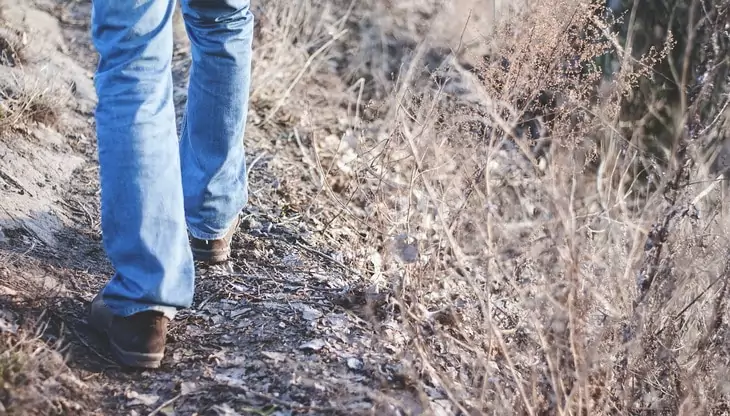
And it will also take too long to dry the jeans. At times you might have to pause your hiking because the jeans are wet and it brings you discomfort when wet. The cotton wool has no properties needed for outdoor temperatures. All outdoor clothes have a wide range of properties to keep you warm and some of them are discussed below. We have made comparisons between the standard hiking garments and the jeans to help you decide.
Features needed for hiking adventures
To start with, hiking is such a breathtakingly beautiful outdoor adventure where you get to explore scenic views, climb elevated summits and trek on various terrains. However, all these come with the possibilities of a harsh weather which can bring an abrupt pause to your adventure if not well clothed. It then becomes challenging to brainstorm the relevant fabric for outdoors. And given a broad range of clothes on the market, some marred by hype of being the best, it also becomes more overwhelming to pick that gear deemed the best.
That salesperson in the denim stores will never discourage you from buying a denim jean for hiking because all he needs is the sale. All can be solved if you know that which paramount features you should take into account. Among others, warmth, comfort, waterproof, breathability, flexibility and lightweight are the essential features expected from outdoor clothes. These are some of the features that the denim jeans do not possess.
Warmth
Because of the inclement temperatures in the outdoors, we need warm jackets, shirts and pants with inherent insulating properties. In this regard, we have a choice between naturally down-filled insulators and the synthetic fabrics. Natural insulators have proved to be the best in this category since they provide more warmth to weight ratio. For example, when you compare the Down-filled jacket with the eVent jacket, the Down jacket emerges victorious. However, the eVent/HyVent/Gore-Tex synthetic insulators also have their own advantages. For example, Down takes longer to dry if it gets wet and can also lose loft and comfort, whereas the synthetic insulators dry quicker and still maintains their comfort. This is the choice we are faced with when considering warm outdoor clothes.
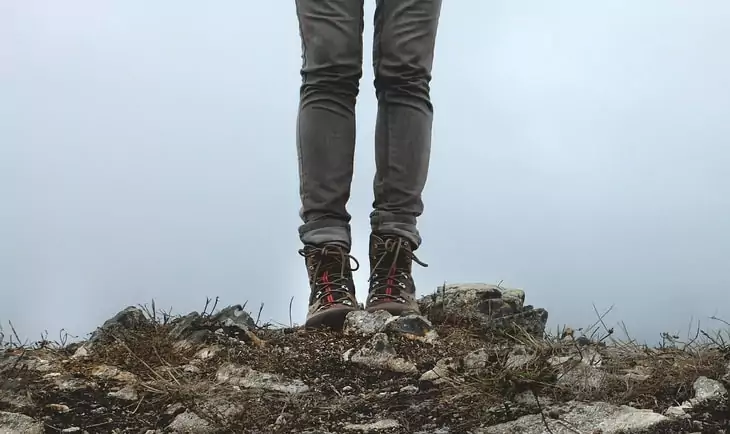
Unfortunately, we cannot say the same with the denim jeans. Yes, they weigh heavy and seem to be rugged and stiff. However, it appears that those properties are not viable and ideal to withstand the freezing temperatures. When the day is too hot, for example, the jeans are too hot too, and when it is cold, the jeans are also cold. In simple terms, they are directly proportional to outdoor temperatures. So you cannot rely on such gear because you may be susceptible to hypothermia. It’s not a joke that there have been some reported cases where people have succumbed to the extreme temperatures wearing jeans and then eventually died.
In conclusion, jeans perform poorly in providing warmth in the wilderness. So stay away from them. If you are taking a day hike in normal conditions, then they would be ideal.
Comfort
Because of the insulating properties and maximum cushioning needed, designated hiking clothes offer the best comfort. You still have the choice between natural and synthetic fabrics here because it is still the battleground for the best with the natural fabrics still emerging as the best, but not always. There are some factors that dictate the winner. For instance, not all Down garments are the best because of the varying fill powers. High quality Gore-Tex may be the best when compared to low quality Down garments.
Looking at the jeans, they are the worst recipes of discomfort if they get wet. To start with, it’s inevitable and inescapable that your body will perspire at some point as a result of the intensive nature of hiking. Climbing summits and ascending slopes may be a precursor to a sweaty body. As thus, the sweat will turn into vapor that needs to evaporate outside. If the clothing that you’re wearing is not breathable enough, that sweat may wet it and chaffing may result as well as blisters.
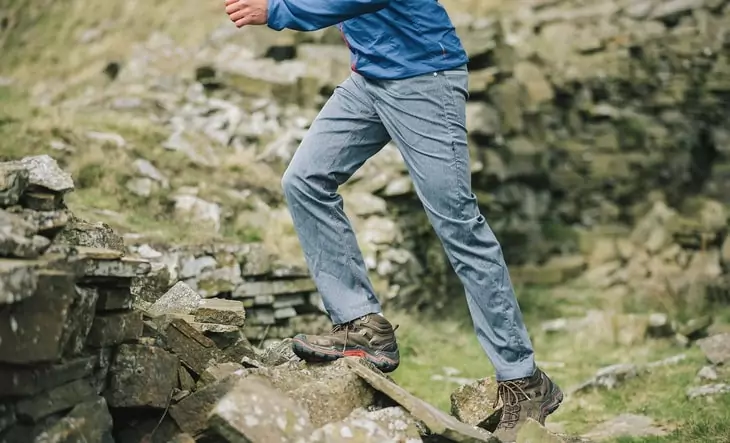
Cotton in jeans has the ability to absorb moisture and dry over a long period. During that drying period, you will have subjected yourself to the discomfort of hiking in jeans. So it is a bad idea to use jeans in extreme temperatures. If you take a hose pipe and sprinkle water onto the jean and onto a Gore-Tex hiking pant, you will see the difference that we are referring to. If you insist on wearing jeans to the harshest temperatures, be ready for the possibility of hypothermia.
Waterproof
Waterproof is also an essential quality of outdoor clothes. The outdoor elements such as the downpour may be unpredictable in some locations. We may also meet some water streams that we have to traverse through them. A waterproof jacket or trouser is, consequently, a need to have for you to have an outstanding adventure. Most of synthetic and natural fabrics have the waterproof membrane to achieve that. The membrane has some porous capillaries to let moisture molecules to escape, but thin enough to block the penetration of water molecules from the outside. You will then remain dry despite being rained on.
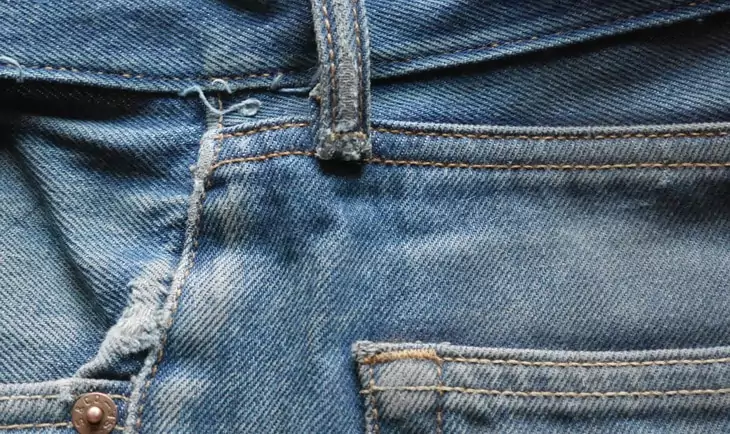
In addition to the waterproof, there is water resistance. Most outdoor garments are coated with the DWR (Durable water Resistance) to repel water so that you remain dry. But that coating deteriorates with time and may need restoration. We cannot say the same with jeans in hiking. They are merely just garments made of wool with no water resistance coating, unless a few.
But waterproof is completely not a feature in denim jeans. Consequent to this, jeans exposes you to the freezing rainy days. It becomes worthless to even think of them. Otherwise, you may be compelled to pack extra gear like the designated rain jackets and rain trousers even for mere precipitations.
Breathability
Breathable garments are the ones that help you escape the hot days’ perspiration. As highlighted above already, sweating is an inescapable process when the days are extremely hot. If not, well evaporated outside, it can dampen your clothes. This has led the manufacturers of outdoor garments to strive towards breathable fabrics. The fabrics may have tiny pores to let moisture out, but cannot let the water molecules, in.
One other property of breathable fabrics is that they are made to repel the absorption of moisture. Keep in mind that most of these fabrics are predominantly made of nylon and polyester. Jeans tend to do the opposite. Cotton is inefficient of letting moisture out. Instead, it absorbs most of the moisture particles because it is not breathable. It is this lack of breathability that leads to wet jeans due to perspiration.
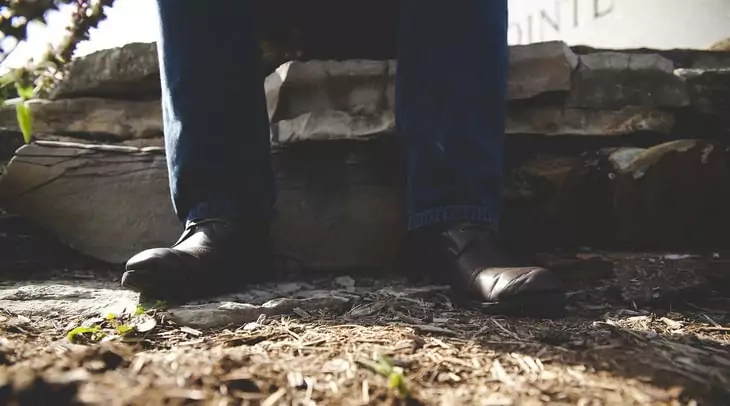
That’s why jeans are recommended for short hikes during normal conditions where we know that too much sweat is unlikely to occur. In such instances that’s where you can say jeans are WOW to travel with because they are stylish but not functional. Perhaps some manufacturers could launch some jean products that have composite synthetic materials to aid in outdoor temperatures.
Lightweight
Minimalist hiking hobbyists know how important it is to have lighter clothes. Heavy garment is a bad idea, particularly for long hikes in the wilderness. They will surely make your hiking pursuit unpleasant. It is everyone’s dream to have lightweight gear. That being said, if you check many outdoor pants, they have many pounds trimmed off. But having a light weight doesn’t mean that some features have been compromised.
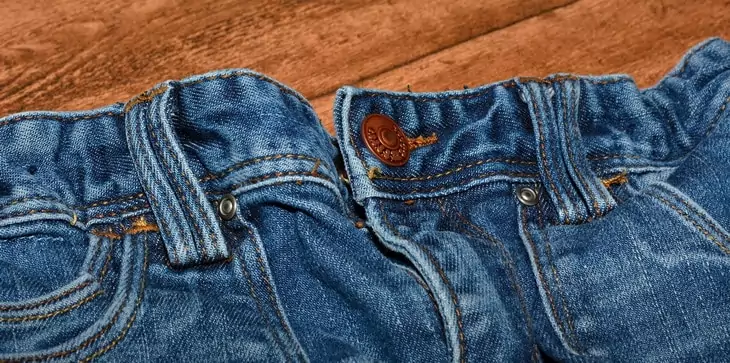
Jeans, on the other hand, are heavy weight. They are rugged and heavy, but that doesn’t necessarily translate to top notch warmth. In spite of being heavy, jeans perform poorly in extreme temperatures. That thick jeans will make you wet in case it gets wet either from rainfall, snow or from body sweat. It turns out that jeans in hiking are again bad moves for minimalist hikers. Your gear will be heavy because of the jeans jacket, jeans shirt and jeans trouser.
Flexibility
Flexibility relates to a proper fit and mobility of wearing outdoor clothes. Most of these outdoor garments are knitted with extra cushioning so that they do not rub against the skin and no chub rub noises whenever walking. You won’t feel any noise no matter how intensive your walk is. That’s what we term as flexibility. Moreover, they won’t restrict your mobility because of the softness of the fabric they are made of. You can participate in strenuous exercises or any other outdoor activity with such garments.
With jeans, however, you may not enjoy mobility when participating in outdoor pursuits. The garments are stiff, so it is not easy to be flexible in them, let alone running in them. They are notorious for subjecting the wearers to blisters and bleeding sores, especially when they are wet. And they can also cause the chub rub noise when walking in them because, quite often, they rub against your skin. This is just one of the reasons why they are recommended for short hikes. Hiking for a long time in jeans is red flagged because they are not flexible enough.
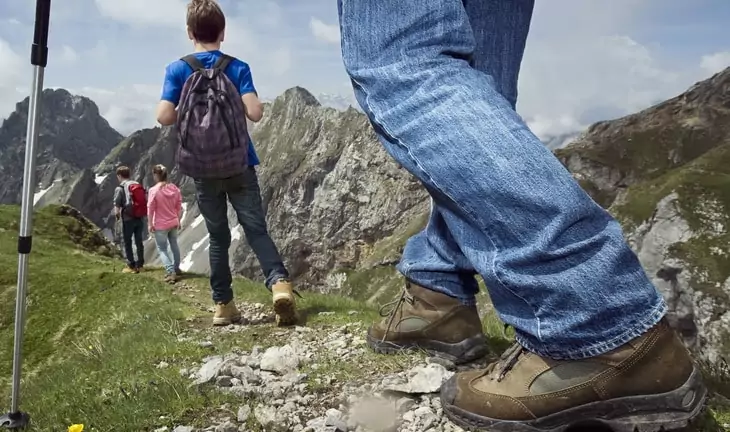
Having discussed the aforementioned features, you should now have a glimpse of why we discredit jeans in hiking because the reasons should be quite obvious now. The main enemy of jeans is their cotton wool. But if you meet any jean made of merino wool, you may consider it for outdoor wear because it is a natural wool from merino sheep.
Below are succinct reasons that substantiate our rejection of jeans in hiking:
- Jeans are not waterproof or water resistant
- They have no moisture-wicking properties
- They are not breathable so more moisture is being absorbed instead of being evaporated
- They are not the insulating materials and never made of one
- They are not warm
- They dry gradually
- They are cold in cold temperatures and hot in hot temperatures: direct proportionality
- They are made of 100% cotton wool
- They feel heavy and bulky, so may not be comfortable for hiking on long trails
The other remarkable difference from the hiking pants and jeans is the features of multiple pockets for additional storage. It is rare to find jeans having large pockets on the trousers, shirts or jackets. As a hiking enthusiast, you will understand that the additional storage is important to store your digital valuables in them. Jeans are very stiff and are not easy to store large valuables in them. You will then be prompted to store your essentials in a backpack where they are not within immediate reach.
Furthermore, because of the fluctuating outdoor temperatures, hiking pants often have zippers around the knee to be converted to shorts if the temperature is too hot so that enough air can circulate. To make the jeans convertible, you may need the knife and a pair of scissors to cut the legs. Knitting them together in harsh temperatures is yet another issue. But we don’t rule out the possibility that some may have such zippers to make them convertible. The bottom line is that they are not as easy as the hiking pants.
So is it a bad or a good idea to have jeans?
Please do not get us into trouble with denim jeans manufacturers on the perception that we discredit their products and discourage their loyal customers. The fact is that, they are not good for hiking due to reasons paraphrased above. They just do not have those essential features that hiking pants have or must have. Hiking outdoors comes with lots of challenges. It is not for fun only as jeans may symbolize. One needs to get ready for the unforeseen extreme temperatures by having great outdoor apparels that provides warmth, comfort, breathability, water resistant and waterproof qualities.
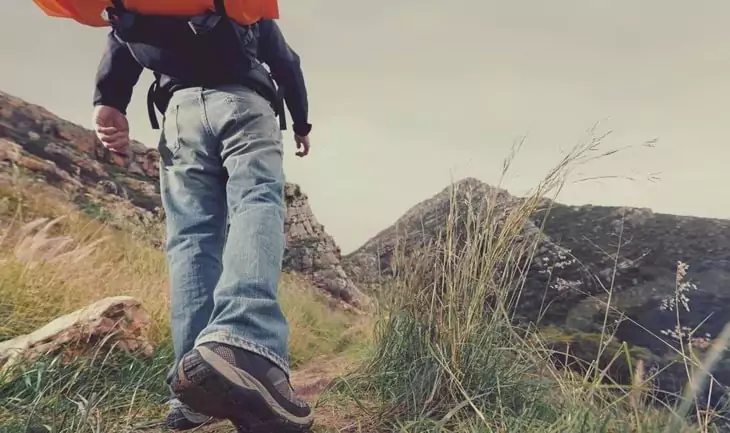
You can buy your jeans and get them ready to attend those extravagant weddings in your proximity, or even chill at the beach with your friends. They are beautiful and very stylish, and you may need to own one. But when hiking, you must try to pack them nicely in your wardrobe so you can use when you come back. Only hiking garments are endorsed for outdoor use. Hypothermia is real and the precursor to having it is when you persistently wear jeans despite being warned not to hike with them in harsh climatic conditions.
Final thoughts on this topic
Hiking is not an ideal outdoor activity to be enjoyed while wearing jeans. Had they been made of other materials such as nylon or polyester with wicking properties, we would endorse them. It seems the cotton in the jeans is the first enemy. Its moisture absorption discredits the denim jeans as the suitable garment for hiking.
Vigilant outdoor enthusiasts know what to look for in outdoor apparels. The features we have discussed in the beginning are some of the prerequisites that are checked for when selecting the best outdoor clothes. Unfortunately, jeans do not possess any of those features. Their warmth is only applicable in dry weather conditions until you start to sweat.
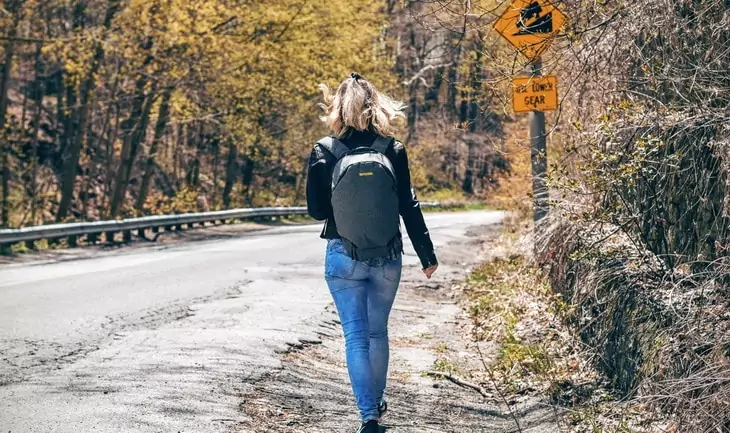
Our final conclusion is that; do not use jeans to hike in the wilderness when you are faced with the possibility of downpours or snowy mornings. Jeans are the recipes of hypothermia in freezing temperatures. For shorter hikes, it’s okay, you can put on them for that day. You can even consider the short pants jeans.
Have you ever used jeans in hiking, mountaineering or backpacking? Please share us your experience below for our readers to relate.

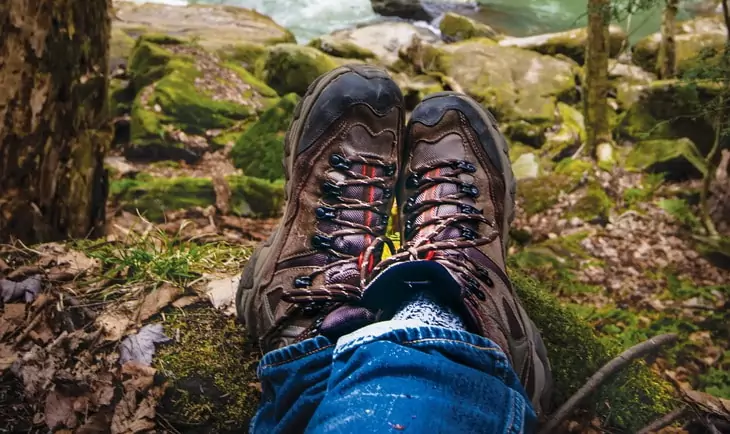
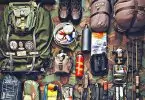





From the outdoor activities that I have carried out in jeans (such as walking in the park and outings with family), I think it is better to do vigorous outdoor activities (such as mountaineering, hiking and fishing) in the right hiking attire than in jeans. I think that they are quite heavy and this limits one’s movement a whole lot. Hiking is already quite a tedious process that should not be made harder by doing it in unsuitable clothes like jeans.
For sure!
I think everything about jeans works against hiking or doing other heavy outdoor activities. That is because it adds extra weight on the body and the tough material limits one’s movement, making it so hard to walk or climb for long. It even gets worse when it gets wet because it takes forever to dry up.
We couldn’t agree more.